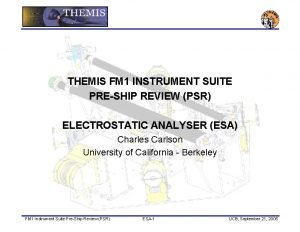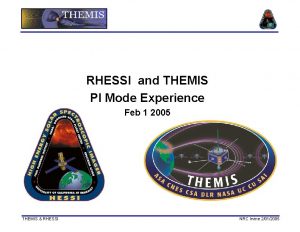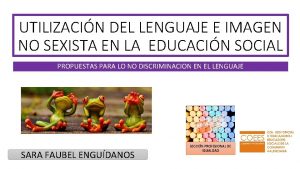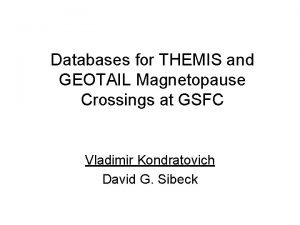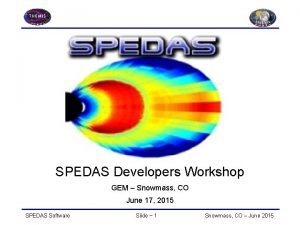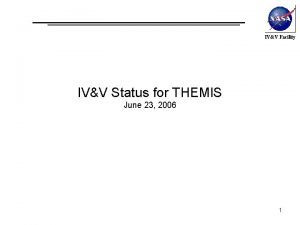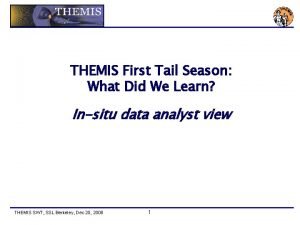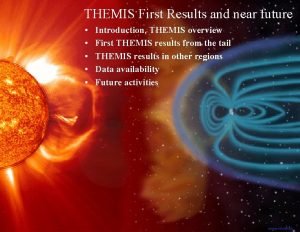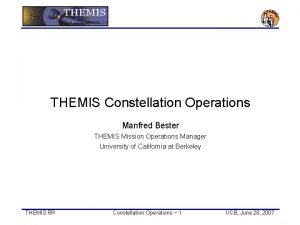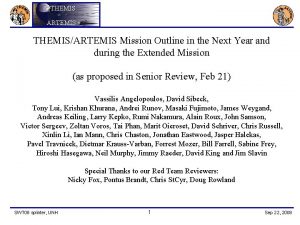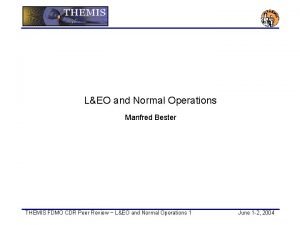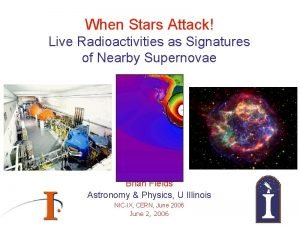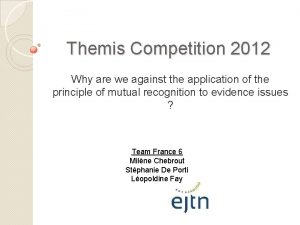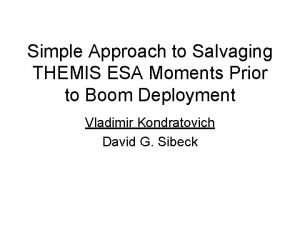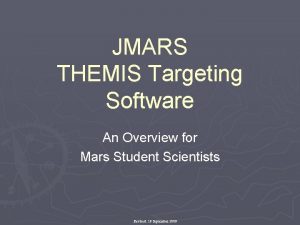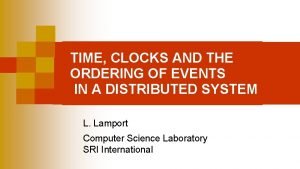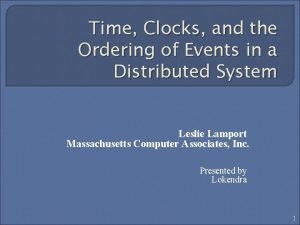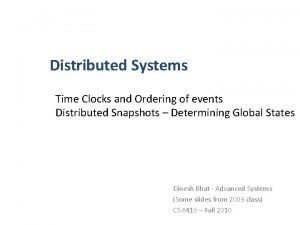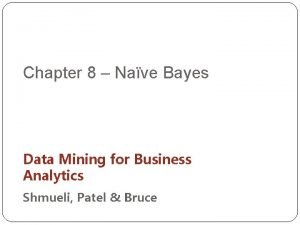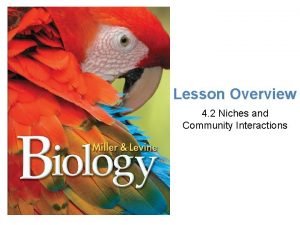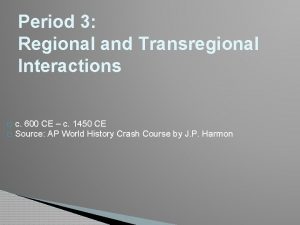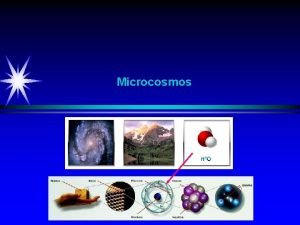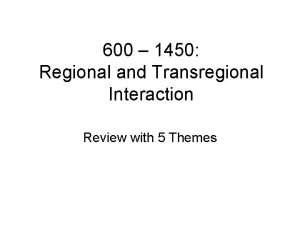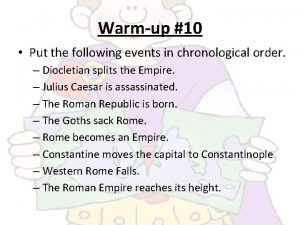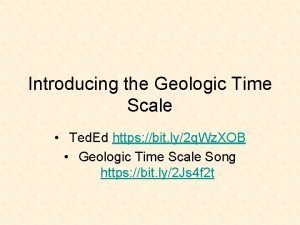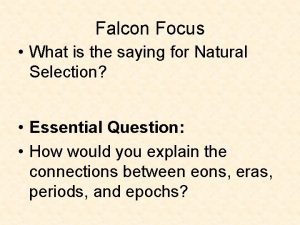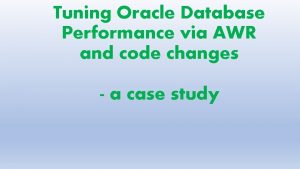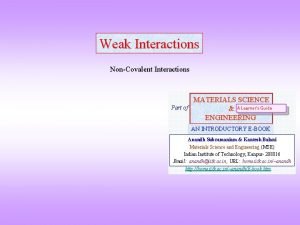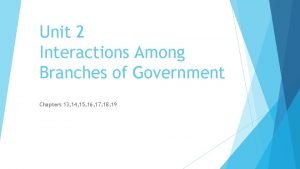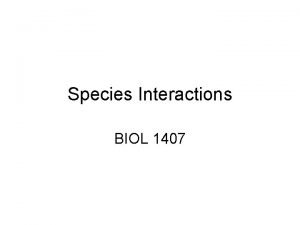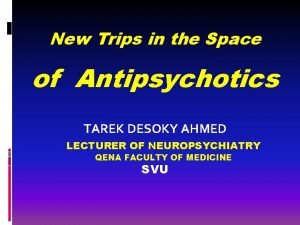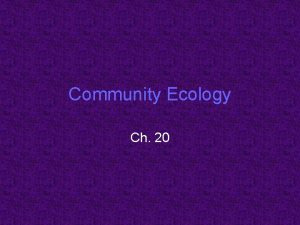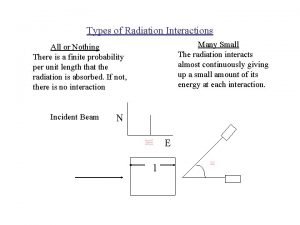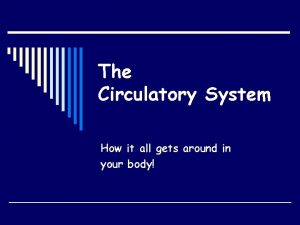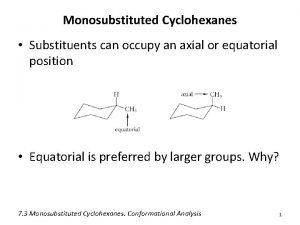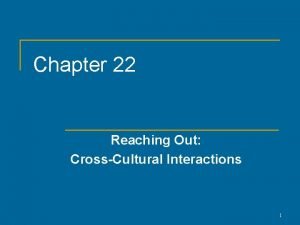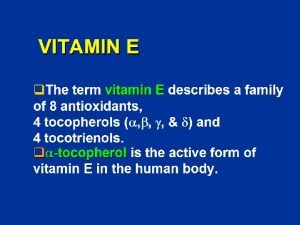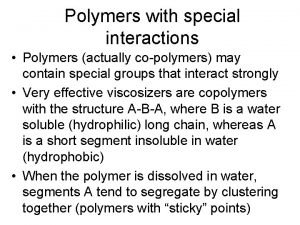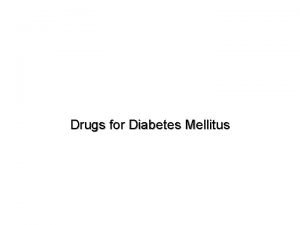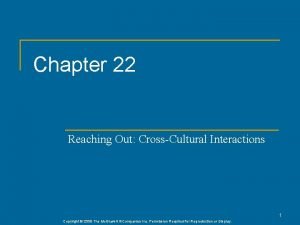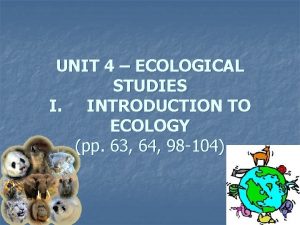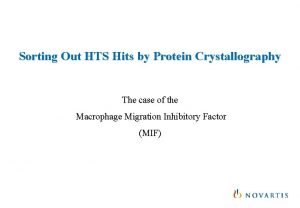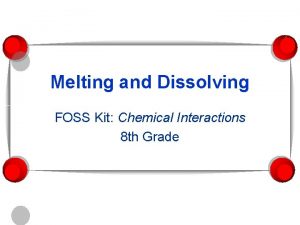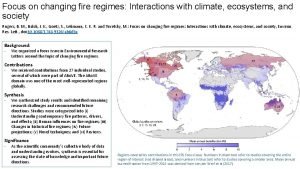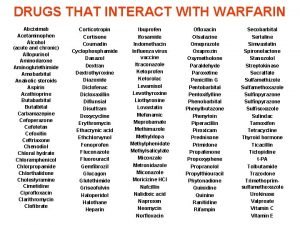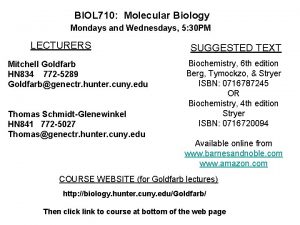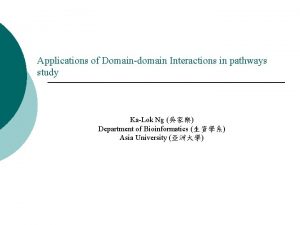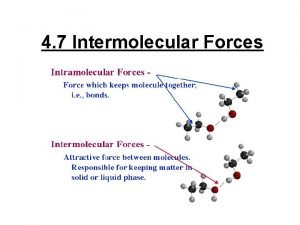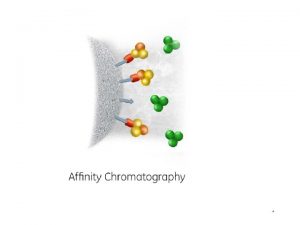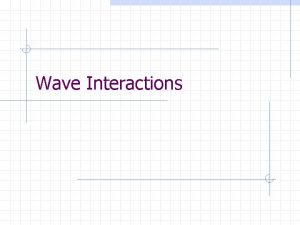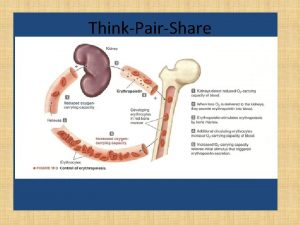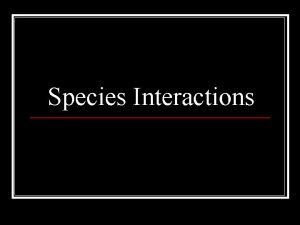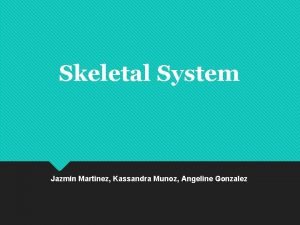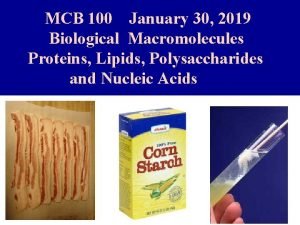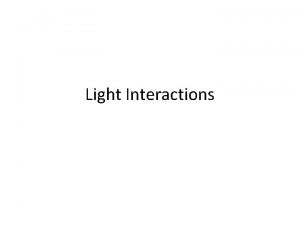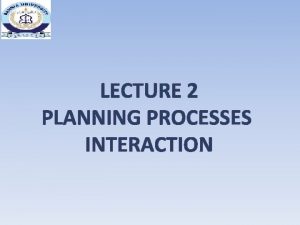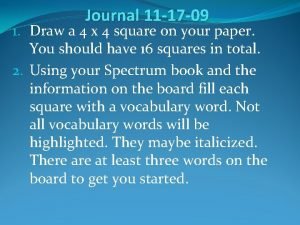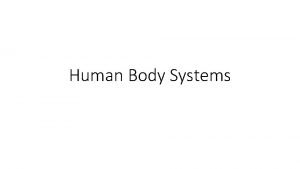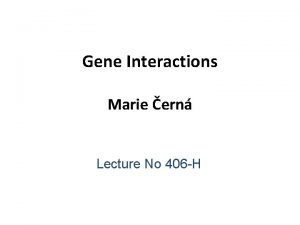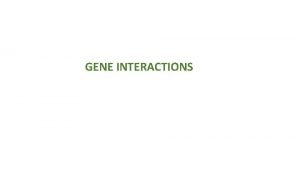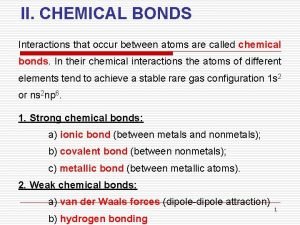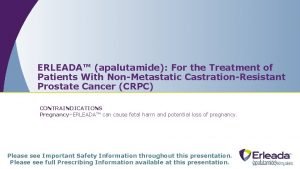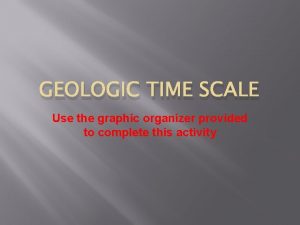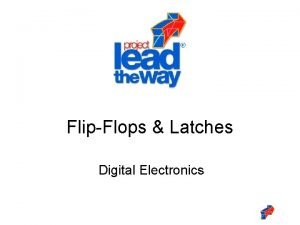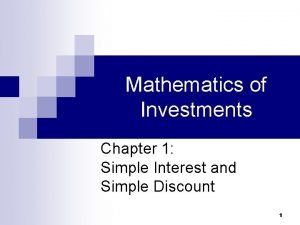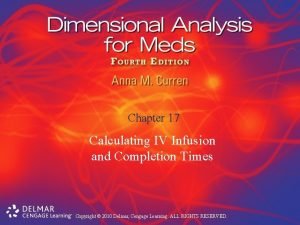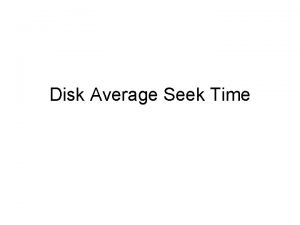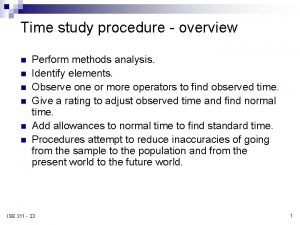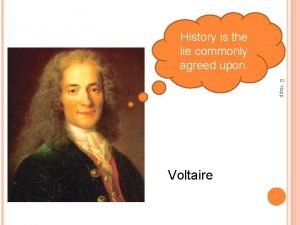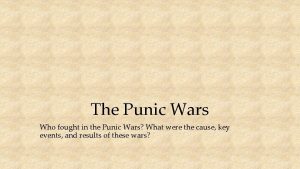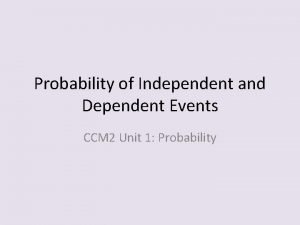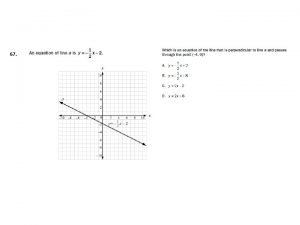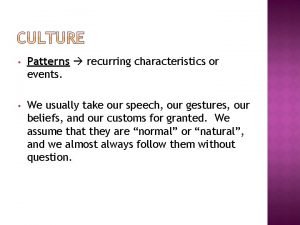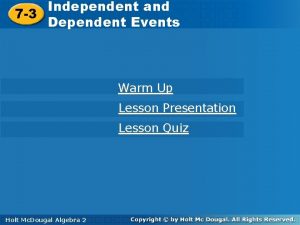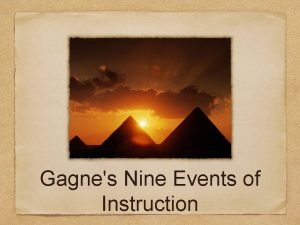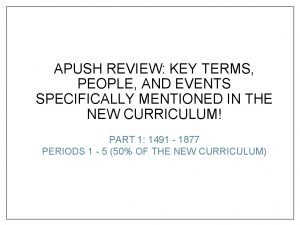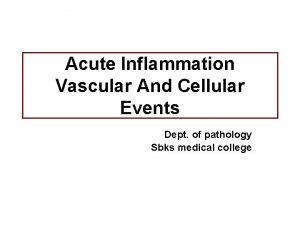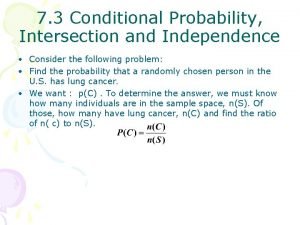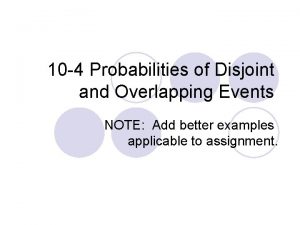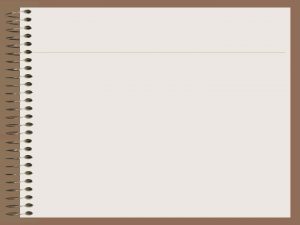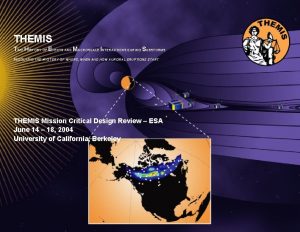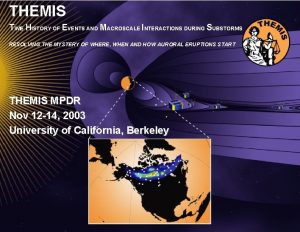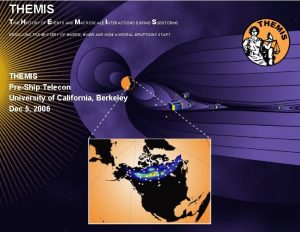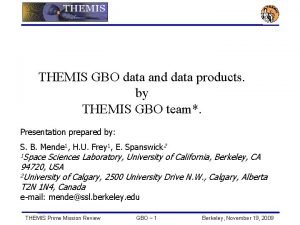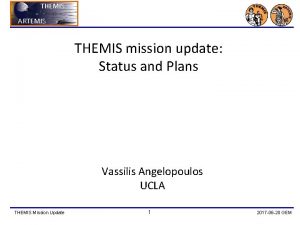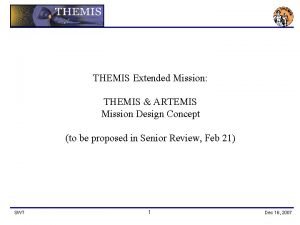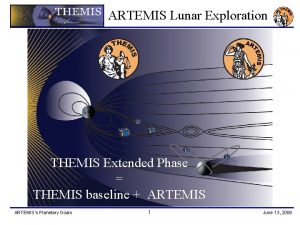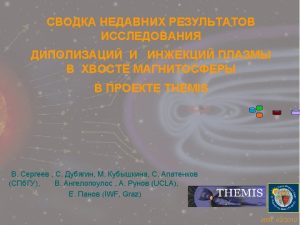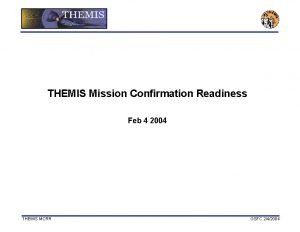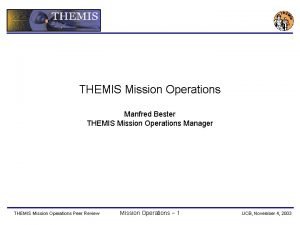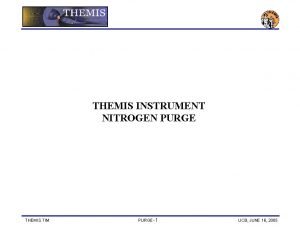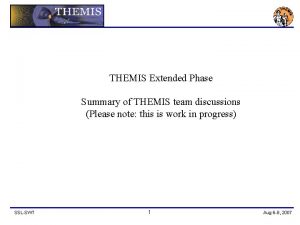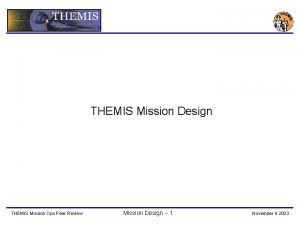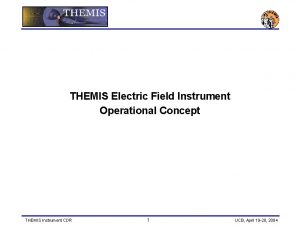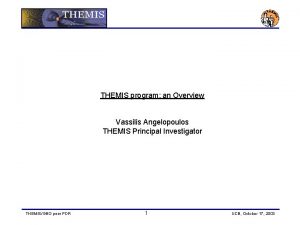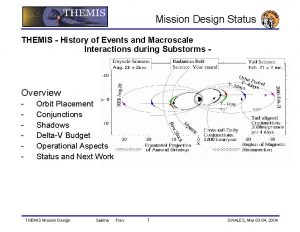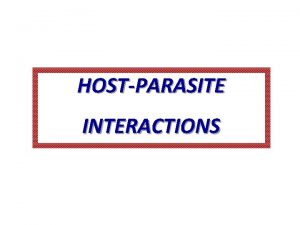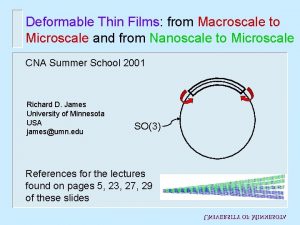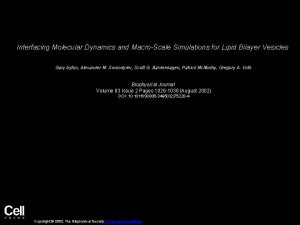THEMIS TIME HISTORY OF EVENTS AND MACROSCALE INTERACTIONS






















































































































- Slides: 118

THEMIS TIME HISTORY OF EVENTS AND MACROSCALE INTERACTIONS DURING SUBSTORMS RESOLVING THE MYSTERY OF WHERE, WHEN AND HOW AURORAL ERUPTIONS START THEMIS Instrument CDR Peer Review – Thermal Material April 19 - 20, 2004 University of California, Berkeley THEMIS Instrument Thermal Peer Review 1 UCB, February 26, 2004

UCB Thermal Peer Review THEMIS Instrument CDR - Thermal Christopher Smith Thermal Engineer csmith@ssl. berkeley. edu 510 -642 -2461 THEMIS Instrument Thermal Peer Review 2 UCB, February 26, 2004

Launch • Five Identical probes launched on a Delta II • Coordinated but independent probe release Probe Carrier Assembly (PCA) on Delta 3 rd Stage • Must design for any launch date • Must design for all solar aspect angles ADAMS Dispense Model Dynamic Simulation Image THEMIS Instrument Thermal Peer Review 3 UCB, February 26, 2004

Probe Design • Simple Single string design • Power positive most attitudes with instruments off (launch, safe hold modes) • Top to sun is slightly power negative • Passive thermal design tolerant of longest shadows (3 hours) • Passive spin stability achieved in all nominal and off-nominal conditions • Monoprop blow down RCS (propulsion) system is self balancing on orbit THEMIS Instrument Thermal Peer Review 4 UCB, February 26, 2004

THEMIS Instruments Eight Deployed Instruments • • Two 5 m spin axis booms (AXB) Four 20 m spin plane wire booms (SPB) One 1 m spin plane boom (SCM) One 2 m spin plane boom (FGM) Two Fixed Instruments • • THEMIS Instrument Thermal Peer Review 5 Corner panel mounted SST ESA mounted to the IDPU which mounts to bottom deck UCB, February 26, 2004

Mission Orbits • Synchronized orbits align in the geotail over North America in winter • Phase into a long eclipse season approximately 30 days long • Maximum eclipse < 180 min Probe Orbital Period Orbit Geometry Prior to First Year Tail Season 1 4 d 1. 500 x 31. 645 Re at 7. 0° 2 2 d 1. 168 x 19. 770 Re at 7. 0° 3 1 d 1. 200 x 12. 019 Re at 9. 0° 4 1 d 1. 200 x 12. 019 Re at 9. 0° 5 4/5 d 1. 350 x 10. 042 Re at 9. 0° THEMIS Instrument Thermal Peer Review 6 UCB, February 26, 2004

Thermal Responsibilities • Probe Bus and Probe Carrier Assembly thermal design / analysis - Swales Aerospace • Instrument thermal design / analysis - UC Berkeley • RCS thermal design / analysis - RCS Contractor • Integrated Probe Bus and Instrument thermal analysis - Swales Aerospace • Integrated Probe Carrier Assembly thermal analysis - Swales Aerospace • Instrument and Instrument Suite level thermal testing - UC Berkeley • Probe level thermal testing - Swales Aerospace THEMIS Instrument Thermal Peer Review 7 UCB, February 26, 2004

Instrument Introduction • Radial EFI (Electric Field Instrument) or SPB (Spin Plane Boom) deploys EFI sensor and preamp on a wire • Axial EFI or AXB (AXial Boom) deploys an EFI sensor and preamp on a coiled rigid stacer SST - Ion and electron Solid State Telescope • • ESA - ion and electron Electro. Static Analyzer • IDPU - Instrument Data Processing Unit • FGM - Flux. Gate Magnetometer • SCM - Search Coil Magnetometer THEMIS Instrument Thermal Peer Review 8 UCB, February 26, 2004

Design Approach • THEMIS will use passive thermal control techniques • Heat dissipating boxes are coupled radiatively and/or conductively to the spacecraft • Components mounted on the exterior of the spacecraft are isolated and/or use low e finishes or blankets to minimize bus heat loss – SST emittance tailored to meet ideal science requirements • Internal box finishes chosen to assist heat transfer between probe top and bottom deck for top deck to sun case • Heaters designed for 50% or below duty cycle in coldest case THEMIS Instrument Thermal Peer Review 9 UCB, February 26, 2004

Interfaces Interface Material SST to Probe ULTEM Isolators SPB to Probe ULTEM Isolators IDPU to Probe ULTEM Isolators ESA to IDPU Bare Bolted FGM to boom G 10 Isolators SCM to boom PEEK structure AXB Tube to top deck ULTEM Isolators AXB Tube to bottom deck Bare bolted AXB to AXB Tube Bare bolted Boom to Probe ULTEM isolators Boom Release Towers to Probe ULTEM isolators THEMIS Instrument Thermal Peer Review 10 UCB, February 26, 2004

Design Margins • Thermal Analysis results must be 5 degrees inside limits • Acceptance tests will be 10 degrees outside of predictions • Qualification tests will be 10 degrees outside of limits • Heater duty cycle will be 50% or less in coldest case 10°C Op Limits Acceptance Max Predict Min Predict Qualification >5°C 10°C THEMIS Instrument Thermal Peer Review 11 UCB, February 26, 2004

Thermal Requirements MRD REQUIREMENT THERMAL DESIGN M-26. THEMIS shall survive and performed as designed under worst-case thermal conditions Compliance. Worst-case hot and cold conditions used in thermal analysis and design. IN-1. The Instrument Payload shall be designed for at least a two-year lifetime Compliance. 2 -year EOL numbers used in thermal analysis and design. IN-2. The Instrument Payload shall be designed for a total dose environment of 33 krad/year Compliance. Radiation environment considered in thermal design. IN-20, -21, -22. The Instrument Payload shall be compatible per (all) ICDs Compliance. Thermal limits and interface requirements documented in ICDs… IN-16 The Instrument Payload shall comply with the Magnetics Cleanliness standard described in the THEMIS Magnetics Cleanliness Plan Compliance. THM-SYS-002 Magnetics Contamination Control Plan. Heaters will be magnetically clean, power/return wires will be twisted. IN-17 The Instrument Payload shall comply with the THEMIS Electrostatic Cleanliness Plan Compliance. THM-SYS-003 Electrostatic Cleanliness Plan signed off. Thermal blankets and all other exposed surfaces will be sufficiently conductive and have sufficiently dense grounding networks. IN-18 The Instrument Payload shall comply with the THEMIS Contamination Control Plan Compliance. THM-SYS-004 Contamination Control Plan signed off. Thermal blankets will be baked out. THEMIS Instrument Thermal Peer Review 12 UCB, February 26, 2004

Analysis Tools Geometry Model • Thermal Desktop 4. 5 / Auto. CAD 2000 – Same version as Swales counterpart Equation Solver • SINDA/FLUINT 4. 5 – Same version as Swales counterpart Simplified Node Analysis • Excel Spreadsheet THEMIS Instrument Thermal Peer Review 13 UCB, February 26, 2004

Thermal Desktop Models • • UCB node, variable, Thermophysical and optical properties all uniquely named to prevent collisions Model definition files transferred to Swales for integration into probe model THEMIS Instrument Thermal Peer Review 14 UCB, February 26, 2004

Spacecraft Environment • Solar Flux varies from a high of 1425 W/m 2 to a low of 1287 W/m 2 • Earth IR varies from a high of 261 W/m 2 to a low of 209 W/m 2 • Earth Albedo varies from a high of 0. 35 to a low of 0. 16 THEMIS Instrument Thermal Peer Review 15 UCB, February 26, 2004

Conductors • A single conductance value or a conductance range is determined through analysis. • If a range is determined, (mostly for contact cases) this is used for hot and cold cases • If a single conductance value was determined than it is multiplied by 1. 5 and 0. 5 to determine the high and low values to use • Whether to use the high or low conductance is determined by the model and the case, though it is usually the max estimate THEMIS Instrument Thermal Peer Review 16 UCB, February 26, 2004

Example Conductors THEMIS Instrument Thermal Peer Review 17 UCB, February 26, 2004

Isolated Joint Conductance THEMIS Instrument Thermal Peer Review 18 UCB, February 26, 2004

EOL and BOL Values THEMIS Instrument Thermal Peer Review 19 UCB, February 26, 2004

AO Effects • • Minimum height at perigee = 1. 108 Re = 700 km altitude, AO evaluation continuing but expected to be small for ITO-FEP-Ag All final material properties will be submitted to GSFC thermal coatings group for approval THEMIS Instrument Thermal Peer Review 20 UCB, February 26, 2004

Thermophysical Properties • Nodal capacitance is adjusted to match current best estimate of mass • Blanket effective emittance • SPB Cold case uses 0. 05, Hot case uses 0. 01 • SCM and FGM, Cold case uses 0. 1, Hot case uses 0. 03 THEMIS Instrument Thermal Peer Review 21 UCB, February 26, 2004

Limit Categories • Science Operation Limit – Limits placed on an operating instrument – Specifies the range of temperatures the instrument will be calibrated to • Eclipse Operation Limit – Limits placed on an operating instrument – May represent a wider (cooler) range that is acceptable to components – Temperatures beyond Science Op Limit need not be calibrated to • Survival Limit – Limits placed on a non operating instrument • Pre-Deployment Limit – Limits placed on a mechanical system before it is actuated • Deployment Limit – Limits placed on a mechanical system at the time of actuation • Post-Deployment Limit – Limits placed on a mechanical system after it has executed its one-time deployment THEMIS Instrument Thermal Peer Review 22 UCB, February 26, 2004

Science vs. Eclipse Limits • Science will not be collected during the deepest eclipses • Science cases currently cut off at 100 min eclipse THEMIS Instrument Thermal Peer Review 23 UCB, February 26, 2004

Limits THEMIS Instrument Thermal Peer Review 24 UCB, February 26, 2004

Boundary Condition Case Sets • Instrument thermal models coupled to the deck temperature boundary conditions provided by Swales THEMIS Instrument Thermal Peer Review 25 UCB, February 26, 2004

Swales P 1 Orbit Cold Case Longest eclipse occurs in P 1 orbit Top tilted toward the sun 13 Degrees BOL Optical Properties Solar Flux = 1287 W/m 2 Earth IR = 209 W/m 2 Blanket e* =. 05 Dissipation 24 W THEMIS Instrument Thermal Peer Review 26 UCB, February 26, 2004

Swales P 4 Orbit Hot Case No eclipse in the P 4 orbit Top tilted away from the sun 13 Degrees EOL Optical Properties Solar Flux = 1425 W/m 2 Earth IR = 265 W/m 2 Earth Albedo = 0. 35 Blanket e* =. 01 Dissipation 27. 4 W Transmitter on for 30 min at perigee THEMIS Instrument Thermal Peer Review 27 UCB, February 26, 2004

Summary of Swales Case Sets THEMIS Instrument Thermal Peer Review 28 UCB, February 26, 2004

Boundary Temperature Inputs THEMIS Instrument Thermal Peer Review 29 UCB, February 26, 2004

General UCB Case Sets • “CBE” is current best estimate • Actual Case sets differ by instrument any modifications and additional case sets will be discussed in the instrument section THEMIS Instrument Thermal Peer Review 30 UCB, February 26, 2004

EFI Axial Booms Thermal Christopher Smith Thermal Engineer csmith@ssl. berkeley. edu 510 -642 -2461 THEMIS Instrument Thermal Peer Review 31 UCB, February 26, 2004

Axial Boom Stowed AXB Mounting Tube Axial Boom (AXB) • Two units mount inside a carbon fiber tube centrally mounted on the probe Single AXB unit • Tube attached to the top deck through an aluminum flange that is bare bolted • Bare bolted to lower deck • Two stacers, one from each unit, deploy out the tube ends THEMIS Instrument Thermal Peer Review 32 UCB, February 26, 2004

AXB a/e Map 80% Alum Foil Tape VDA Tape 20% Bare Carbon Fiber Alodined Aluminum Bare Carbon Fiber THEMIS Instrument Thermal Peer Review 33 UCB, February 26, 2004

AXB Model Inputs • Optical materials – Aluminum Foil Tape – Bare Carbon Fiber – Alodined Aluminum AXB Mounting Tab • Thermophysical materials – Aluminum, 6061 – K 13 D 2 U Carbon Fiber – T 300 Carbon Fiber • Heaters – None used at this time, though we are prepared to supply deployment heaters if needed • Conductors – Bare bolted top flange to deck: 0. 612 W/C inc. bolts, flange, and adhesive – Bare bolted bottom flange to deck: 3. 3 W/C each, 20 W/C total – Bare bolted AXB to Tube mount: 0. 79 W/C each, 0. 476 total • Power Dissipation – 0 Watts THEMIS Instrument Thermal Peer Review 34 UCB, February 26, 2004

AXB Case sets • Bottom to sun a cold case boundary condition has no eclipse • All above cases run separately with stowed boom and deployed boom THEMIS Instrument Thermal Peer Review 35 UCB, February 26, 2004

AXB Mechanical Unit Standard Plots - Deployed THEMIS Instrument Thermal Peer Review 36 UCB, February 26, 2004

AXB Mechanical Unit Sunline Plots - Deployed THEMIS Instrument Thermal Peer Review 37 UCB, February 26, 2004

AXB Mechanical Unit Standard Plots - Stowed THEMIS Instrument Thermal Peer Review 38 UCB, February 26, 2004

AXB Mechanical Unit Sunline Plots - Stowed THEMIS Instrument Thermal Peer Review 39 UCB, February 26, 2004

AXB Results Table THEMIS Instrument Thermal Peer Review 40 UCB, February 26, 2004

AXB Mounting Tube Modifications • Spacecraft was consuming too much power in the coldest, but nominal, science case ~2. 2 W • To help mitigate this issue two modifications are being considered for the AXB Mounting tube • Tube construction switched from all T 300 ( 5 W/m. K) fiber to 4 plys K 13 D 2 U (500 W/m. K) + 2 plys T 300 • Tube exterior changed from blanket to a mix of Foil tape and bare carbon • Current results show the AXB unit getting too hot and we are currently exploring options to cool it down • Increase isolation between AXBs and tube • Isolate tube flange from top deck • At worst, cool the tube down by reducing the percentage of foil tape • When the design is complete it will be within limits though new temperatures may require thermal vac hot deploy test be repeated at a new higher temperature THEMIS Instrument Thermal Peer Review 41 UCB, February 26, 2004

AXB Temp Map for Hottest Case THEMIS Instrument Thermal Peer Review 42 UCB, February 26, 2004

AXB Temp Map for Coldest Case THEMIS Instrument Thermal Peer Review 43 UCB, February 26, 2004

Axial Boom Deployed AXB “can” AXB Pre. Amp Exposed Bit After Deploy THEMIS Instrument Thermal Peer Review 44 UCB, February 26, 2004

AXB Geometry Model Deployed Stacer Model THEMIS Instrument Thermal Peer Review 45 UCB, February 26, 2004

AXB Deployed Elements a/e Map DAG 213 Alodined Aluminum DAG 154 Bronze THEMIS Instrument Thermal Peer Review 46 UCB, February 26, 2004

AXB Model Inputs • Optical materials – – Acheson Coloids DAG 213 (2 part) Acheson Coloids DAG 154 Alodined Aluminum Bronze AXB Preamp • Thermophysical materials – – Aluminum, 6061 Bronze Elgiloy PEEK • Heaters – None • Conductors – – – Main Stacer to Tip Piece, 1 rivet and circumferential contact, . 3 < G <. 9 W/C Tip Piece To Bronze DDAD Lock, Large threaded interface, 10 W/C DDAD Lock to Pre. Amp, large threaded bolt 3. 57 W/C Pre. Amp to Mini Stacer, 1 rivet and circumferential contact. 3< G <. 8 W/C Mini Stacer to Can, 1 rivet, 0. 3 W/C • Power Dissipation – 0. 07 Watts Nominal at Preamp THEMIS Instrument Thermal Peer Review 47 UCB, February 26, 2004

AXB Deployed Elements Case Sets • Top and Bottom to sun cases after deployment are limited to no less than 11 degrees off the sun line • The Model for the Top and Bottom to Sun cases goes through a 180 min eclipse. A 100 min eclipse is the actual limit and is shown in plots THEMIS Instrument Thermal Peer Review 48 UCB, February 26, 2004

AXB Boom Elements Standard Plots - Deployed THEMIS Instrument Thermal Peer Review 49 UCB, February 26, 2004

AXB Boom Elements Sunline Plots - Deployed THEMIS Instrument Thermal Peer Review 50 UCB, February 26, 2004

AXB Preamp Results Table • Science operation limited to a 36 min eclipse • Current predicts show Preamp falling below the limit on the TO 99 can. THEMIS Instrument Thermal Peer Review 51 UCB, February 26, 2004

AXB Preamp Qualification • AXB Preamp model is currently a simple lump with the proper radiative surfaces • Thermal isolation of the TO-99 from the outer shell is complicated and difficult to reliably model • Thermal Vacuum test planned determine thermal isolation of the TO-99 from the preamp outer surface (April 12 th – April 23 rd) • This thermal isolation determined by test will be input into thermal model to determine a reliable qualification temperature, still likely to be under the current qualified temp of – 65 THEMIS Instrument Thermal Peer Review 52 UCB, February 26, 2004

AXB Preamp Models THEMIS Instrument Thermal Peer Review 53 UCB, February 26, 2004

EFI Spin Plane Booms Thermal Christopher Smith Thermal Engineer csmith@ssl. berkeley. edu 510 -642 -2461 THEMIS Instrument Thermal Peer Review 54 UCB, February 26, 2004

SPB • • THEMIS Instrument Thermal Peer Review 55 4 separate units mounted to the bottom deck Snout pokes out the solar panel Sphere and Preamp deploy out the snout on a wire (Half Sphere shown in picture) Sphere and preamp separate as rotation unwinds a thin wire from a spring loaded wheel UCB, February 26, 2004

SPB a/e Map Alodined Aluminum MLI AZ 2000 IECW Inorganic White Paint THEMIS Instrument Thermal Peer Review 56 UCB, February 26, 2004

SPB Model Inputs • Optical materials – – Germanium Black Kapton (Sheldahl 275 XC Black Kapton) Alodined Aluminum AZ 2000 IECW Inorganic White Paint Blanket: . 01 < e <. 05 • Thermophysical materials – Aluminum, 6061 – ULTEM • Heaters – None used at this time, though we are prepared to supply deployment heaters if needed • Conductors – 1/8” Ultem isolators for top deck: 0. 01 W/C each, 0. 04 W/C total • Power Dissipation – 0 Watts THEMIS Instrument Thermal Peer Review 57 UCB, February 26, 2004

SPB Case Sets THEMIS Instrument Thermal Peer Review 58 UCB, February 26, 2004

SPB Mechanical Unit Standard Plots THEMIS Instrument Thermal Peer Review 59 UCB, February 26, 2004

SPB Mechanical Unit Sunline Plots THEMIS Instrument Thermal Peer Review 60 UCB, February 26, 2004

SPB Results Table THEMIS Instrument Thermal Peer Review 61 UCB, February 26, 2004

SPB Heat Map for Coldest Case THEMIS Instrument Thermal Peer Review 62 UCB, February 26, 2004

SPB Heat Map for Hottest Case THEMIS Instrument Thermal Peer Review 63 UCB, February 26, 2004

SPB Deployed Elements • Preamp and sphere are connected by a thin wire • Preamp is connected to SPB deployment unit by another wire • Preamp is nearly identical to Axial version • Sphere is only a mechanical element Titanium Nitride DAG 213 THEMIS Instrument Thermal Peer Review 64 UCB, February 26, 2004

Preamp and Sphere Analysis THEMIS Instrument Thermal Peer Review 65 UCB, February 26, 2004

SPB Sphere and Preamp Model • Nodes 3 and 4 are for the sphere hot and cold cases • Nodes 5 and 6 are for the preamp hot and cold cases • As with the axial preamp the SPB preamp falls below its limit by a bit. Qualification plan is in the works THEMIS Instrument Thermal Peer Review 66 UCB, February 26, 2004

SPB Sphere and Preamp Plot THEMIS Instrument Thermal Peer Review 67 UCB, February 26, 2004

Flux Gate Magnetometer and Boom Thermal Christopher Smith Thermal Engineer csmith@ssl. berkeley. edu 510 -642 -2461 THEMIS Instrument Thermal Peer Review 68 UCB, February 26, 2004

FGM • Two carbon fiber tubes joined by an elbow hinge • Frangibolt release on the base hinge • Elbow hinge is capture only, no release THEMIS Instrument Thermal Peer Review 69 UCB, February 26, 2004

FGM Geometry Model FGM Model Deployed Stowed THEMIS Instrument Thermal Peer Review 70 UCB, February 26, 2004

FGM a/e Map AZ 2000 IECW White Paint Alodined Aluminum on Undersides 30% AZ 2000 IECW White Paint MLI 70% VDA Tape a/e = 0. 5 to 0. 9 THEMIS Instrument Thermal Peer Review 71 UCB, February 26, 2004

FGM Model Inputs • Optical materials – – MLI Vapor Deposited Aluminum Tape AZ 2000 IECW White Paint Alodined Aluminum Elbow Hinge • Thermophysical materials – – Aluminum, 6061 M 55 J ULTEM Dexter Hysol 9349 • Heaters – None in current model though provisions have been made for deployment heaters if needed and it looks like we will need them. • Conductors – – – – Deck Hinge ULTEM isolators, 0. 0078 < G <. 0133 W/C each Conductance through deck hinge, 0< G <. 02 W/C Conductance through adhesive to boom tube, 6. 6 W/C Conductance through adhesive at elbow hinge, 4. 9 W/C Conductance through elbow hinge, 0< G < 0. 04 W/C Conductance through adhesive to Sensor, 3. 3 W/C G 10 Isolation mounts at FGM sensor, 0. 01 W/C Elbow Latch Tower ULTEM isolators, 0. 0078 < G <. 0133 W/C each • Power Dissipation – 0 Watts Nominal THEMIS Instrument Thermal Peer Review 72 UCB, February 26, 2004

FGM Case Sets • Identical case sets to the SCM * UCB model eclipse time, boundary conditions do not yet include eclipse THEMIS Instrument Thermal Peer Review 73 UCB, February 26, 2004

FGM Deployed – Nominal Plot THEMIS Instrument Thermal Peer Review 74 UCB, February 26, 2004

FGM Deployed – Top and Bottom to Sun Plot THEMIS Instrument Thermal Peer Review 75 UCB, February 26, 2004

FGM Stowed – Nominal Plots THEMIS Instrument Thermal Peer Review 76 UCB, February 26, 2004

FGM Results Table THEMIS Instrument Thermal Peer Review 77 UCB, February 26, 2004

FGM Deployed Coldest Heat Map THEMIS Instrument Thermal Peer Review 78 UCB, February 26, 2004

FGM Deployed Hot Temperature Map THEMIS Instrument Thermal Peer Review 79 UCB, February 26, 2004

FGM Stowed Coldest Temperature Map THEMIS Instrument Thermal Peer Review 80 UCB, February 26, 2004

FGM Stowed Hottest Temperature Map THEMIS Instrument Thermal Peer Review 81 UCB, February 26, 2004

Search Coil Magnetometer and Boom Thermal Christopher Smith Thermal Engineer csmith@ssl. berkeley. edu 510 -642 -2461 THEMIS Instrument Thermal Peer Review 82 UCB, February 26, 2004

SCM Model • Carbon Fiber boom mounted on the top deck • Frangibolt activated deployment • Sensor mounted in PEEK structure THEMIS Instrument Thermal Peer Review 83 UCB, February 26, 2004

SCM Geometry Model SCM Model Deployed Stowed THEMIS Instrument Thermal Peer Review 84 UCB, February 26, 2004

SCM a/e Map AZ 2000 IECW White Paint Alodined Aluminum on Undersides 30% AZ 2000 IECW White Paint 70% VDA Tape MLI THEMIS Instrument Thermal Peer Review a/e = 0. 5 to 0. 9 85 UCB, February 26, 2004

SCM Model Inputs • Optical materials – – MLI Vapor Deposited Aluminum Tape AZ 2000 IECW White Paint Alodined Aluminum Deck Hinge • Thermophysical materials – – Aluminum, 6061 M 55 J ULTEM Dexter Hysol 9349 • Heaters – None in current model though provisions have been made for deployment heaters if needed and it looks like we will need them. • Conductors – – – Deck Hinge ULTEM isolators, 0. 0078 < G <. 0133 W/C each Conductance through deck hinge, 0< G <. 02 W/C Conductance through adhesive to boom tube, 6. 6 W/C Conductance through adhesive to Sensor, 3. 3 W/C PEEK isolation of SCM sensor, 0. 01 W/C Release Tower ULTEM isolators, 0. 0078 < G <. 0133 W/C each • Power Dissipation – 0 Watts Nominal THEMIS Instrument Thermal Peer Review 86 UCB, February 26, 2004

SCM Case Sets THEMIS Instrument Thermal Peer Review 87 UCB, February 26, 2004

SCM Deployed – Nominal Plot Deployed SCM Plot, Nominal Case Sets THEMIS Instrument Thermal Peer Review 88 UCB, February 26, 2004

SCM Deployed – Top and Bottom to Sun Plot Deployed SCM Plot, Top and Bottom to Sun THEMIS Instrument Thermal Peer Review 89 UCB, February 26, 2004

SCM Stowed – Nominal Plots THEMIS Instrument Thermal Peer Review 90 UCB, February 26, 2004

SCM Plot Cross Tube Temp Differentials Cross-Tube Temperature Differentials THEMIS Instrument Thermal Peer Review 91 UCB, February 26, 2004

SCM Plot Axial Temperature Differentials THEMIS Instrument Thermal Peer Review 92 UCB, February 26, 2004

SCM Results Table THEMIS Instrument Thermal Peer Review 93 UCB, February 26, 2004

SCM Deployed Coldest Heat Map THEMIS Instrument Thermal Peer Review 94 UCB, February 26, 2004

SCM Deployed Hot Temperature Map THEMIS Instrument Thermal Peer Review 95 UCB, February 26, 2004

SCM Stowed Coldest Temperature Map THEMIS Instrument Thermal Peer Review 96 UCB, February 26, 2004

SCM Stowed Hottest Temperature Map THEMIS Instrument Thermal Peer Review 97 UCB, February 26, 2004

Solid State Telescope Thermal Christopher Smith Thermal Engineer csmith@ssl. berkeley. edu 510 -642 -2461 THEMIS Instrument Thermal Peer Review 98 UCB, February 26, 2004

SST • Mounts directly to the corner panel on three 1/8 inch isolators • Has four open apertures that are sometimes obscured by attenuators • Must operate at 10 Deg C or less THEMIS Instrument Thermal Peer Review 99 UCB, February 26, 2004

SST Geometry Model AZ 2000 IECW Ebanol Alodined Aluminum Black Body / Alodined Aluminum THEMIS Instrument Thermal Peer Review 100 UCB, February 26, 2004

SST Model Inputs • Optical materials – Ebanol – AZ 2000 IECW White Paint – Alodined Aluminum • Thermophysical materials – Aluminum, 6061 – ULTEM • Heaters – Two 5 watt heaters per sensor head controlled by redundant thermostats – Set points – 50 and -42 • Conductors – 3 ULTEM isolators to corner panel, 0. 0078 < G <. 0133 W/C each • Power Dissipation – 0. 135 W Watts Nominal per Sensor THEMIS Instrument Thermal Peer Review 101 UCB, February 26, 2004

SST Case Sets THEMIS Instrument Thermal Peer Review 102 UCB, February 26, 2004

SST – Nominal Plots THEMIS Instrument Thermal Peer Review 103 UCB, February 26, 2004

SST – Top and Bottom to Sun Plots THEMIS Instrument Thermal Peer Review 104 UCB, February 26, 2004

SST Results Table THEMIS Instrument Thermal Peer Review 105 UCB, February 26, 2004

SST – Coldest Heat Map THEMIS Instrument Thermal Peer Review 106 UCB, February 26, 2004

SST Hottest Heat Map THEMIS Instrument Thermal Peer Review 107 UCB, February 26, 2004

ESA – IDPU – SCM Preamp Thermal Christopher Smith Thermal Engineer csmith@ssl. berkeley. edu 510 -642 -2461 THEMIS Instrument Thermal Peer Review 108 UCB, February 26, 2004

ESA – IDPU – SCM Preamp (Mounted on Back) ESA Support Bracket IDPU • ESA and IDPU mounted together to conserve shielding / weight • SCM Preamp mounted to IDPU to share heat THEMIS Instrument Thermal Peer Review 109 UCB, February 26, 2004

ESA-IDPU a/e Map Alodined Aluminum Black Anodized Aluminum THEMIS Instrument Thermal Peer Review 110 UCB, February 26, 2004

ESA-IDPU Model Inputs ESA Brace • Optical materials – Black Anodized Aluminum – Alodined Aluminum • Thermophysical materials – Aluminum, 6061 – ULTEM • Heaters – Survival Heater • Conductors – – IDPU, 6 ULTEM isolators to bottom deck, 0. 0078 < G <. 0133 W/C each Bare Bolted ESA to IDPU, 9. 8 W/C ESA Brace to bottom deck, 2 ULTEM isolators, 0. 0078 < G <. 0133 W/C each Bare bolted SCM Preamp to IDPU, 5. 6 W/C THEMIS Instrument Thermal Peer Review 111 UCB, February 26, 2004

ESA-IDPU Model Inputs - Power Dissipation THM-SYS-009 Rev O, Apr 04 THEMIS Instrument Thermal Peer Review 112 UCB, February 26, 2004

ESA-IDPU Case Sets THEMIS Instrument Thermal Peer Review 113 UCB, February 26, 2004

ESA-IDPU – Nominal Plots THEMIS Instrument Thermal Peer Review 114 UCB, February 26, 2004

ESA-IDPU – Top and Bottom to Sun Plots THEMIS Instrument Thermal Peer Review 115 UCB, February 26, 2004

ESA-IDPU Results Table THEMIS Instrument Thermal Peer Review 116 UCB, February 26, 2004

ESA-IDPU Coldest Temperature map THEMIS Instrument Thermal Peer Review 117 UCB, February 26, 2004

EAS-IDPU Hottest Temperature Map THEMIS Instrument Thermal Peer Review 118 UCB, February 26, 2004
 Themis quiz builder
Themis quiz builder Themis fm
Themis fm Themis pi
Themis pi Themis lenguaje inclusivo
Themis lenguaje inclusivo Themis athanassiadou
Themis athanassiadou Themis database
Themis database Michael ludlam
Michael ludlam Spedas wiki
Spedas wiki Themis
Themis Themis
Themis Themis
Themis Themis constellation
Themis constellation Themis
Themis Themis
Themis Themis athanassiadou
Themis athanassiadou Themis competition
Themis competition Esa themis
Esa themis Themis software
Themis software Mutually exclusive events vs not mutually exclusive events
Mutually exclusive events vs not mutually exclusive events Start time, end time and elapsed time
Start time, end time and elapsed time Accounting information system chapter 1
Accounting information system chapter 1 Time clocks and the ordering of events
Time clocks and the ordering of events Time clocks and the ordering of events
Time clocks and the ordering of events Event ordering in distributed systems
Event ordering in distributed systems Qualitative quantitative
Qualitative quantitative Loanable funds graph recession
Loanable funds graph recession Properties and interactions of magnets
Properties and interactions of magnets Identify which sphere of earth each image represents.
Identify which sphere of earth each image represents. Niches biology
Niches biology Examples of integral product architecture
Examples of integral product architecture What are the factors that influence communication?
What are the factors that influence communication? Symbiosis and species interactions keystone webquest
Symbiosis and species interactions keystone webquest Naive bayes pays attention to complex interactions and
Naive bayes pays attention to complex interactions and Modular vs integral product architecture
Modular vs integral product architecture Niches and community interactions
Niches and community interactions Regional and transregional interactions
Regional and transregional interactions Neutrinous
Neutrinous Regional and transregional interactions
Regional and transregional interactions Put the following events in chronological order history
Put the following events in chronological order history Scaleted
Scaleted Geological time scale with events
Geological time scale with events Awr tuning
Awr tuning Noncovalent interactions
Noncovalent interactions Congress formal and informal powers
Congress formal and informal powers Parasitism
Parasitism Example of commensalism
Example of commensalism Sertraline interactions
Sertraline interactions Felodapine
Felodapine Interactions in the environment grade 7
Interactions in the environment grade 7 What are abiotic factors
What are abiotic factors Section 20-1 review species interactions
Section 20-1 review species interactions Flocabulary photosynthesis read and respond answers
Flocabulary photosynthesis read and respond answers Ppi omeprazole
Ppi omeprazole Types of interactions
Types of interactions Circulatory system interactions with other systems
Circulatory system interactions with other systems Axial substituents
Axial substituents Ppi drug interactions
Ppi drug interactions Pathway of food through digestive tract
Pathway of food through digestive tract Chapter 22 reaching out cross-cultural interactions
Chapter 22 reaching out cross-cultural interactions Cobalomin
Cobalomin Special interactions
Special interactions Glipizide interactions
Glipizide interactions Chapter 22 reaching out cross-cultural interactions
Chapter 22 reaching out cross-cultural interactions Chapter 22 reaching out cross-cultural interactions
Chapter 22 reaching out cross-cultural interactions Unit 5 ecology
Unit 5 ecology Heterotrophs
Heterotrophs Hits renewable sort
Hits renewable sort Nutrient interactions
Nutrient interactions Foss chemical interactions
Foss chemical interactions Interactions
Interactions Protein binding interactions
Protein binding interactions Ecosystems interactions
Ecosystems interactions Molecular biology
Molecular biology Protein binding interactions
Protein binding interactions Intramolecular interactions
Intramolecular interactions Protein binding interactions
Protein binding interactions Wave
Wave Wave interactions
Wave interactions Insight therapies involve verbal interactions
Insight therapies involve verbal interactions Integumentary interactions with other systems
Integumentary interactions with other systems Cape buffalo and cattle egrets relationship
Cape buffalo and cattle egrets relationship Angeline gonzalez
Angeline gonzalez Dna-protein interactions
Dna-protein interactions Opaque materials
Opaque materials Interaction planning process
Interaction planning process Wave interactions
Wave interactions Interactions among living things
Interactions among living things Nervous interactions with other systems
Nervous interactions with other systems Interactions
Interactions Reciprocal recessive epistasis
Reciprocal recessive epistasis Gene interactions
Gene interactions Interactions between atoms occur
Interactions between atoms occur Erleada drug interactions
Erleada drug interactions Different types of community interactions
Different types of community interactions Graphic organizer of geologic time scale
Graphic organizer of geologic time scale History also history physical
History also history physical Setup time and hold time in digital electronics
Setup time and hold time in digital electronics How to find rate of simple interest
How to find rate of simple interest Calculating iv infusion rate
Calculating iv infusion rate Seektime
Seektime Method of work study
Method of work study How to perform a time study
How to perform a time study Commonly agreed upon
Commonly agreed upon Second punic war key events and results
Second punic war key events and results Timeline of romeo and juliet act 3
Timeline of romeo and juliet act 3 Identify independent and dependent events
Identify independent and dependent events Compound probability examples
Compound probability examples Two events are independent
Two events are independent It looks for patterns recurring characteristics and events
It looks for patterns recurring characteristics and events Independent vs dependant events
Independent vs dependant events Exhaustive events
Exhaustive events Pros and cons of gagne's nine events of instruction
Pros and cons of gagne's nine events of instruction Review exercise terms and events answer key
Review exercise terms and events answer key Cellular events of acute inflammation
Cellular events of acute inflammation Conditional probability intersection
Conditional probability intersection Disjoint event
Disjoint event What is a short story in literature
What is a short story in literature Describe the events and atmosphere of gatsby's party
Describe the events and atmosphere of gatsby's party Direct speech act
Direct speech act

